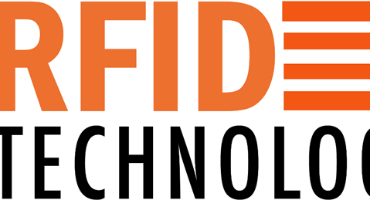RFID UHF (Ultra-High Frequency) technology is used in transport and logistics to enable real-time tracking and management of assets like pallets, crates, and vehicles due to its long read range and ability to read multiple tags at once. It automates tasks such as inventory control, warehouse management, and shipment monitoring by using radio waves to identify tagged items as they pass through checkpoints like dock doors or conveyor belts. This enhances efficiency, reduces errors, and improves transparency throughout the supply chain.
How it works in transport and logistics
Asset and inventory tracking: Tags are attached to individual items, returnable transport items (RTIs) like pallets and crates, or entire vehicles.
Automated data capture: Fixed readers at dock doors, checkpoints, or on forklifts automatically scan tags as they pass, capturing data like product name, quantity, and vehicle number.
Real-time visibility: The captured data is transmitted to a central system, providing real-time visibility of inventory and assets, which helps with accurate inventory counts and reduces shrinkage.
Process automation: Readers can be integrated with systems to automate processes, such as triggering an alarm if the wrong items are picked for shipment or automatically updating the warehouse management system.
Integration: The system can be integrated with other business systems, such as ERP (Enterprise Resource Planning) or WMS (Warehouse Management System), to provide comprehensive data for analytics and decision-making.
Key benefits:
Increased efficiency: Automates manual tasks like counting and checking, leading to faster processing times.
Reduced costs: Optimises the use of assets like RTIs, reduces labour costs associated with manual tracking, and minimises errors that can lead to financial loss.
Improved accuracy: Automates data entry, which reduces human error in counting, picking, and shipping.
Enhanced transparency: Provides real-time data across the supply chain, from the warehouse to transportation, enabling better overall management and control
RFID (Radio Frequency Identification) technology in transport and logistics uses radio waves to automatically identify and track assets like products, pallets, and vehicles in real-time. It involves attaching an RFID tag with a microchip to an item, which communicates with an RFID reader to transmit data without needing line-of-sight, unlike barcodes. This technology improves supply chain visibility, streamlines inventory management, automates data capture, and enhances overall efficiency and security by reducing manual labour and errors.
How it works:
RFID UHF Tag Labels: An RFID label tag is attached to an object, containing a microchip that stores information.
RFID UHF Readers: RFID readers are placed at various checkpoints throughout the supply chain, such as loading docks, warehouses, or gateways.
Transmission: The tag sends a radio frequency signal to the reader when it passes within range.
Data capture: The reader identifies the item and its location, sending the data to a central system for processing.
Key applications & uses in transport and logistics:
Inventory management: RFID provides real-time inventory accuracy and helps automate tasks like stocktaking and order fulfilment.
Real-time tracking: It enables the real-time tracking of assets like containers, vehicles, and individual items as they move through the supply chain.
Warehouse efficiency: It helps with automated recording of incoming and outgoing goods, improves warehouse organisation, and prevents overcrowding.
Automated workflows: RFID can automate data capture and digitise processes, reducing the need for manual logs and improving reliability.
Bottleneck identification: Real-time data from RFID can help identify and address shipping bottlenecks.
Asset and equipment management: It can be used to track the location and usage of equipment and tool

